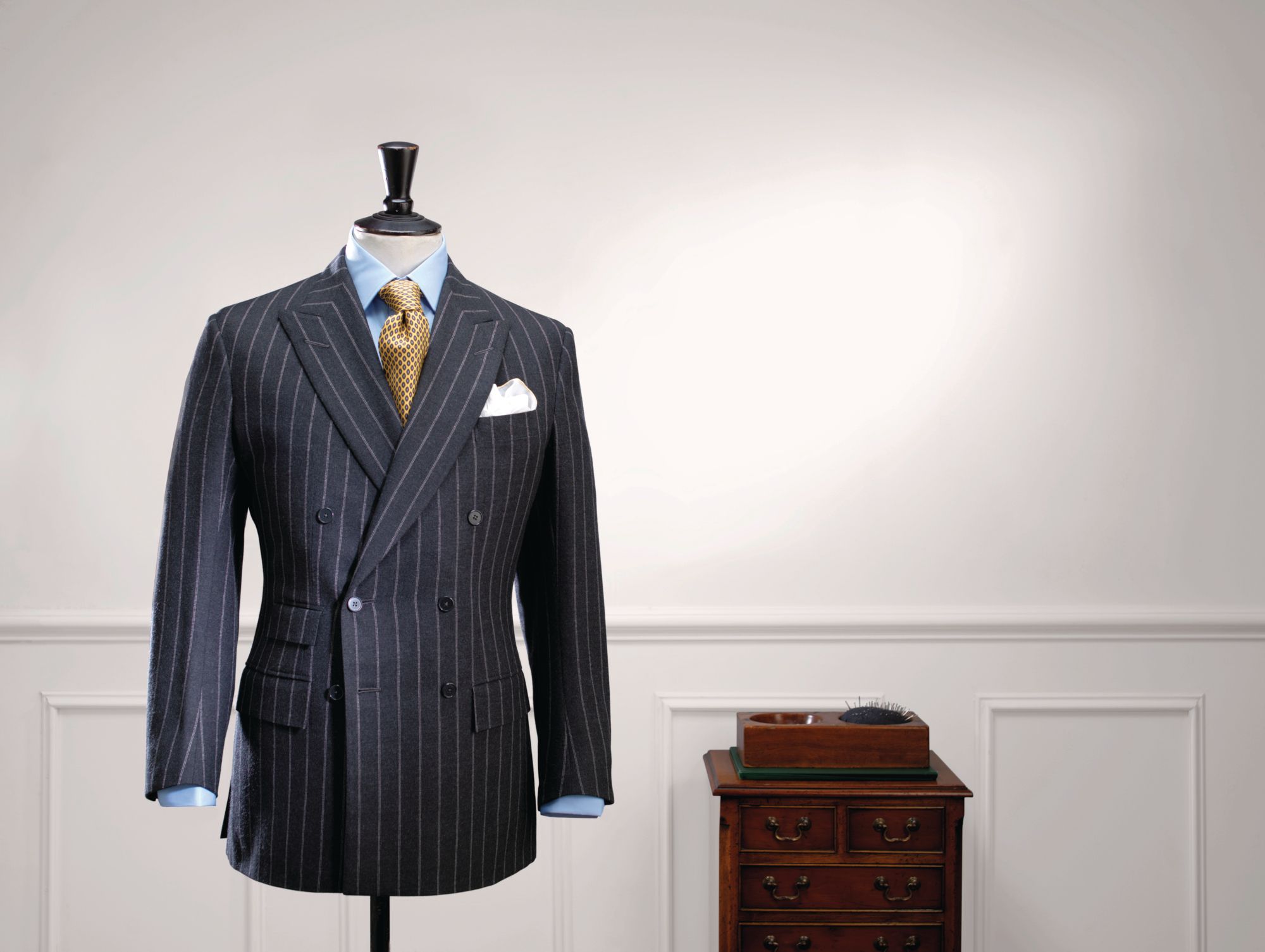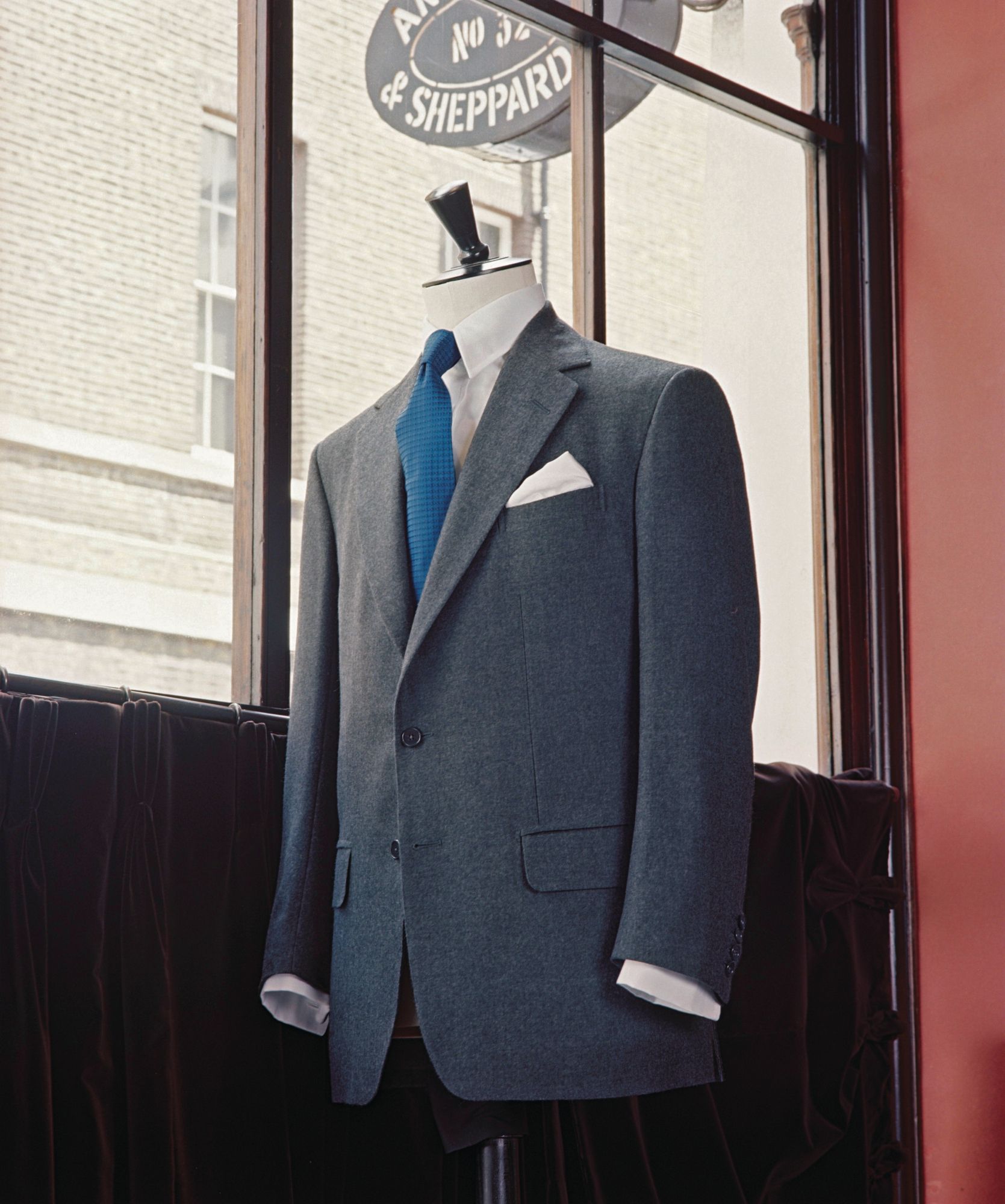As Savile Row brands shift their focus to Asia, their business models are becoming more interesting
No garment district on Earth has been immortalised quite like Savile Row. Stretching from Vigo Street in London’s Mayfair up to Conduit Street, “The Row”, as it is known in fashion circles, dates back to the late 17th century when the first Earl of Burlington bought up half of Piccadilly. Naturally, he purchased the surrounding land too, and, in time, filled it with tailors to ensure he and his sons were immaculately attired.
Today, Savile Row dresses everyone from Prince William and Jay-Z to James Bond and Benedict Cumberbatch, and has been immortalised in film and fiction. However, storm clouds loomed for The Row—which largely relies on the bankers of Wall Street to stay afloat—when, late last year, President Trump slapped an additional 25 per cent tariff on wool-based British exports to the US. Facing a crisis, the tailors of Savile Row turned to mainland China to find customers to help pick up the slack.
It hasn’t been an easy decade. Since the 2008 recession, men have become more careful with their spending, a trend that has been compounded by Trump’s unexpected tariffs and now the impact of the coronavirus pandemic. A bespoke Savile Row suit costs an average of £4,800—a sum only a niche market can afford.
Related: Wardrobe CEO Lim Fang Heng: 3 Fundamentals Of Wearing A Suit

Looking East
However, savvy Asian investors are betting on brands such as Gieves & Hawkes, Anderson & Sheppard and Stowers London now that they have chosen to shift their focus to clients based in Asia at this difficult time. Gieves & Hawkes has tailoring stores in Hong Kong and Shanghai, and Anderson & Sheppard has trunk shows around Greater China.
“Asia is a very wide and varied market, but there is a general appreciation for tailoring and for dressing well for business,” says Anda Rowland, director of Anderson & Sheppard. “British tailors are far better known in Japan than China, and have been active there for many years.”
Richard Anderson, the co-founder of the eponymous brand (not related to Anderson & Sheppard), argues that it will do well in Asia because it has access to special lightweight fabrics that are expensive to manufacture but ideal for hotter Asian climates. He says that the specific cuts have been honed to fit the waist and flare over the hips in a way back-street tailors’ rarely do, and that the result is far more flattering. Asian men are now also buying just a jacket or waistcoat from the storied brands and wearing them socially, rather than to work.
Tough Times
But how wise an investment is luxury suiting right now? “Luxury is hit hard in economic downturns, nobody would argue with that,” says Vinnie Lauria, the founding partner of Golden Gate Ventures, a venture capital firm in Singapore. “That’s common knowledge and a market norm, but I actually think the coronavirus represents an investment opportunity. The market is a lot more nuanced than it looks—and if you are a luxury brand right now, then, yes, you are you going to have less revenue in 2020, but even if your sales are slow, this is a real opportunity to build a tactile, online brand that is built to last.”



